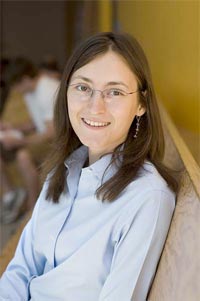This is the fourth in a series of profiles of our MIT Energy Fellows—graduate students who are supported by MIT Energy Initiative (MITEI) members to participate in faculty-led research and become part of a long-term community of students and alumni.

In northern St. Lucia, water is scarce during the dry season. Yulia M. Agramakova hopes to come up with an energy-efficient way to boost water supplies for the spectacular island’s 160,000 residents, plus the nearly 1 million tourists who visit every year.
Agramakova is one of 39 MIT Energy Fellows supported by MITEI’s member companies. Sponsored by Chevron USA, an MITEI sustaining member, Agramakova is interested in combining existing techniques and methods to develop better ways to seek out groundwater.
Tapping into underground water supplies would be a more energy-friendly way to provide drinking water than alternatives such as desalination of ocean water, which St. Lucia and other islands are considering to meet dire water shortfalls.
“St. Lucia has a big water deficit because of its growing population,” she said. “They are using water from polluted river systems, which is not good water to drink. The island has a complicated geology of igneous rocks and clay, but there is underground water there that has never before been used.”
To uncover underground water supplies, Agramakova, who works with F. Dale Morgan, professor of geophysics in the Department of Earth, Atmospheric and Planetary Sciences (EAPS), uses a method called electrical resistivity sounding. This involves hammering four high-conductivity metal stakes into the ground, running current between them, and measuring the difference in how strongly materials between them oppose the flow of electric current. The results provide information on properties of rocks and soil that help researchers determine whether it’s worth drilling in that location.
St. Lucia’s pristine, sunny beaches are a far cry from Dimitrovgrad, a city in the central Russia region of Ulyanovsk where Agramakova grew up. Ulyanovsk is named for its most famous son—Vladimir Ilyich Ulyanov, better known as Lenin.
Agramakova, an outstanding student in her small hometown school, decided to concentrate on math and physics during the last two years of her primary education because she thought these fields would give her the biggest long-term academic boost toward a career.
She was right. At Lomonosov State University in Moscow, she used her physics background to study geophysics after becoming interested in seismic methods that help researchers “see” underground structures. After visiting local oil and gas drilling sites, she said, “I was amazed at how using data obtained from the surface can get you very detailed information about oil locations underground and where to drill wells. The seismic data help us better understand subsurface structures and some of the properties of rock material.”
Agramakova graduated with honors in 2005 with a degree in geology and geophysics. She worked for a Moscow consulting firm for two years, interpreting seismic prospecting data for potential hydrocarbon drilling locations. Eventually, she said, the work, which used standard procedures and did involve developing and implementing new interpretative techniques, started to seem boring.
“I felt I wanted to be at the place where the new ideas are born and developed,” she said. “ I wanted to create something new. That’s why I decided to apply for the PhD program at MIT,” she said.
After spending a year preparing for entrance exams and studying English in New Haven, Connecticut, where her husband, Vladimir, is pursuing a PhD degree in physics at Yale (both 25, the couple met in Moscow), Agramakova was accepted to MIT. She said the program, as she had hoped, is helping her do innovative work in a cutting-edge field. “What I mainly expected to see at MIT is strong collaborations between the different departments,” she said. “I am glad that MIT met my expectation.”